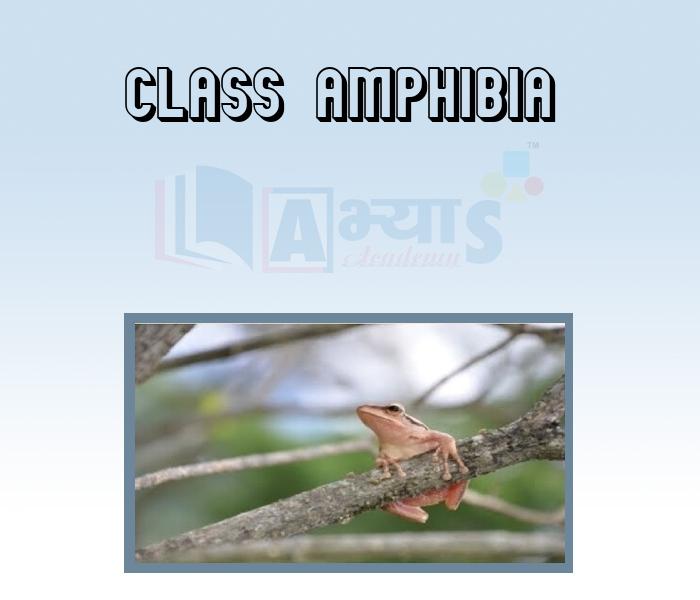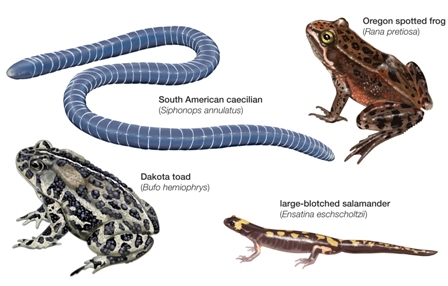Class Amphibia










Class Amphibia
Class Amphibia (Greek: amphi:dual , bios-life)
Amphibian means animals which can live in water and on land.
These were the first land vertebrates (animals with backbones) to appear. Their limbs are adapted for walking and leaping. Most of them have two pairs of pentadactyle (with five digits) limbs. Some have fewer digits. Their skin is moist and without scales. They have a three-chambered heart with two auricles and a ventricle. Amphibians breed in water. Fertilization is external. The larvae (tadpoles) are aquatic They breathe through gills and have tails. Tadpoles undergo metamorphosis and change into adults which respire through lungs . The moist skin also helps in respiration.
Examples: Frog (Rana), toad (Bufo), tree frog (Hyla), salamanders (e.g., Triturus), and caecilians (e.g., Ichthyophis). Caecilians are limbless amphibians.

______________ of the following organisms have moist skin with no scales. | |||
| Right Option : C | |||
| View Explanation | |||
Fertilization is ___________ in Amphibia.
| |||
| Right Option : A | |||
| View Explanation | |||
How does the larva of the frog differs from the adult frog ?
| |||
| Right Option : D | |||
| View Explanation |
Students / Parents Reviews [10]
One of the best institutes to develope a child interest in studies.Provides SST and English knowledge also unlike other institutes. Teachers are co operative and friendly online tests andPPT develope practical knowledge also.

Aman Kumar Shrivastava
10thAbout Abhyas metholodology the teachers are very nice and hardworking toward students.The Centre Head Mrs Anu Sethi is also a brilliant teacher.Abhyas has taught me how to overcome problems and has always taken my doubts and suppoeted me.

Shreya Shrivastava
8thA marvelous experience with Abhyas. I am glad to share that my ward has achieved more than enough at the Ambala ABHYAS centre. Years have passed on and more and more he has gained. May the centre flourish and develop day by day by the grace of God.

Archit Segal
7thMy experience with Abhyas academy is very good. I did not think that my every subject coming here will be so strong. The main thing is that the online tests had made me learn here more things.

Hiya Gupta
8thI have spent a wonderful time in Abhyas academy. It has made my reasoning more apt, English more stronger and Maths an interesting subject for me. It has given me a habbit of self studying

Yatharthi Sharma
10thIt has a great methodology. Students here can get analysis to their test quickly.We can learn easily through PPTs and the testing methods are good. We know that where we have to practice

Barkha Arora
10thMy experience was very good with Abhyas academy. I am studying here from 6th class and I am satisfied by its results in my life. I improved a lot here ahead of school syllabus.

Ayan Ghosh
8thAbhyas is a complete education Institute. Here extreme care is taken by teacher with the help of regular exam. Extra classes also conducted by the institute, if the student is weak.

Om Umang
10thBeing a parent, I saw my daughter improvement in her studies by seeing a good result in all day to day compititive exam TMO, NSO, IEO etc and as well as studies. I have got a fruitful result from my daughter.

Prisha Gupta
8thAbhyas Methodology is very good. It is based on according to student and each child manages accordingly to its properly. Methodology has improved the abilities of students to shine them in future.
